|
A brief disclaimer: the following is a paid preview of the Magi-Knights TTRPG system. I point this out only in the interest of transparency. MK is a very cool project that I actually became interested in when the 1.0 playtest documents were released. You can also scroll back to December 31, 2021 on my Twitter account to see me live tweeting my way through the document and offering my first impressions. I’m hyped to get to contribute to their project in this more official way. So with that out of the way...
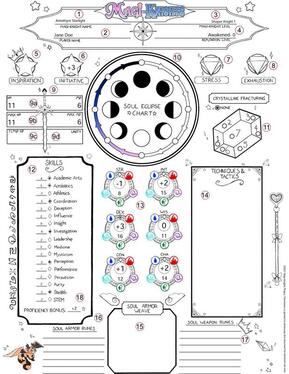 Character Sheet - Magi-Knights Character Sheet - Magi-Knights
Welcome to Magi-Knights! This system is a 5th edition Dungeons and Dragons hack that is tailor made to run epic tales of Magical Girls and Sentai Heroes that harken back to classics like Sailor Moon, Power Rangers or even more recent entries like Persona or Madoka Magica.
Players will be taking the role of the namesake Magi-Knights, high school students empowered with otherworldly abilities to combat otherworldly evil. Each Magi-Knight will have a 3 page character sheet, one with their overarching statistics (like hit points, Strength, skill modifiers etc.) and 2 interchangeable character sheets, one with their student identity and another with their transformed identity. This sheet swapping mechanic helps capture a major theme of Magi-Knights, learning to balance a student identity and a heroic identity. When they transform, players will swap one sheet for the other as they switch into their new mode. (I personally recommend printing them double sided on the same sheet, so you can dramatically flip the page!) 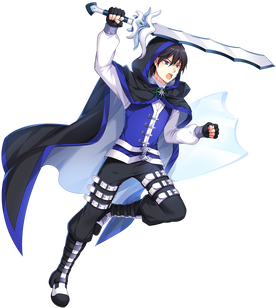 Art - Magi-Knights Art - Magi-Knights
While MK retains the majority of the core statistics and dice resolution rules of 5E, the first major shift comes in character classes. MK only has one class. Appropriately enough it’s called “Magi-Knight.” But the MK class is really more of a chassis that all the layers of customization fit into.
Each character will have quite a few choices to make during creation. For the heroic identity you’ll need an Elemental Affinity, much like a set of class proficiencies, it will determine your armor type (roughly paralleling the different D&D armor types) and the weapon types available to you (similar to classic D&D weapons but adding unique tags, elemental types and a range of spellcasters weapons). MKs will also pick up a combat form (similar to Combat Styles). Later, this inherent arsenal will be enhanced with a variety of new powers in the form of Armor and Weapon runes, Shards of Power and Armor Weaves. MKs will also be able to accumulate currency in the form of gloom gems (to trade for other equipment of their choice), a full spectrum of loot for MKs to chase after in their fight against evil. 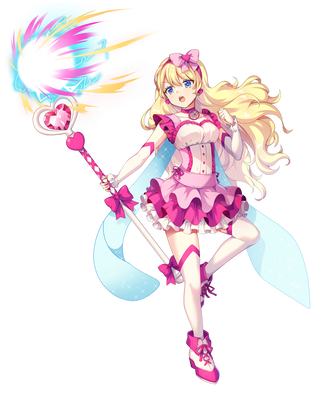 Art - Magi-Knights Art - Magi-Knights
You’ll also be picking a Magic Type (which determines what Spell Paths you can pick) and some Spell Paths, these are packets of spells that your MK is proficient in. Each path levels with you, unlocking new and improved spells as you increase in character level. The preview document only goes up to level 6 but based on the distribution of Spell Paths it seems likely that an MK will eventually learn all or most of the Spell Paths available to their Style by level 15.
Spells are cast using a spell point system rather than either the old Vancian model or the newer spell slot model. Spells can be tweaked, improving speed, damage or other effects, at the cost of increased MP usage.
And your Student identity is important as well. As a Student you have opportunities to accumulate social points and build bonds with NPCs and even your fellow MKs. NPC bonds will allow them to provide increasingly large bonuses to assist you. Player bonds are crucial because there are several teamwork elements in heroic combat (like party wide buffs called tactical maneuvers and team up attacks called combination maneuvers) that depend on them to function.
Being a Student also comes with a lot of responsibilities. Just like a Persona game, there is almost as strong an emphasis on the daytime lives of each MK, with a robust School Day system that challenges students to keep up with classwork on top of their heroic activities. Each School Day is broken down into a variety of randomized skill challenges, with the type and difficulty varying both by week and daily randomization rolls. Succeeding at school can provide crucial bonuses to night time activities and failing can create Stress and Exhaustion which will drag you down in critical moments.
While the School Day occupies the morning, the evening sees the game flip into Investigation and Patrol phases. The MKs are tasked with protecting a city from evil forces whose work is not always immediately obvious. MKs will have to scour the city, tracking down leads and conquering minor challenges before they can unravel each mysterious plot and confront the big bads. Together, these day and night cycles give the game a natural structure. But it’s not all work and heroism. Part of the way these two identities balance is with the flexible free time phase. This brief period each day (and possibly 2 on the weekend!) let MKs choose between a variety of benefits: building bonds, doing homework, recuperating from stress or injury, hanging out in various locations around town or even training up a new MK. And if they botch school badly enough they might even lose their precious free time to detention.  Herald Art - Magi-Knights Herald Art - Magi-Knights
A noteworthy distinction from its D&D roots is the powerful emphasis on the Squad. MKs are always acting as part of a team and the mechanics underline that. Even stat generation is done collectively, with each player then able to assign the generated stats and tweak them slightly. The Squad also has a collective reputation level (a separate sort of tier or leveling system) that many abilities key off of, similar to the 5E proficiency bonus but tracked across the whole party.
A particularly cool system I wanted to be sure to highlight is the Social Combat system. In keeping with the tropes and types of the genre, not every combat in Magi-Knights is meant to end in death and destruction. Often a human enemy's conversion (or at least reluctant retreat) is the preferred outcome. MK’s can opt to use their actions in combat to persuade their mortal foes, chipping away at Conscience Hit Points, a tangible measure of a foe’s will to continue fighting. Compelling arguments laid out by multiple MKs can turn a foe away from combat without having to kill them. Another fascinating (and deeply genre appropriate) innovation is the role of the Herald. The Herald is an official GM-NPC who serves as the party’s guide, patron and mentor. This gives GMs (technically called Magic Keepers here) a source appropriate lever to interact with the game directly. Heralds can be quite diverse but clearly draw inspiration from characters like Sailor Moon’s Luna/Artemis, Kerberos from Card Captor Sakura and even the Guinea Pigged Sensei of Power Rangers Ninja Storm.
If you’re keeping score at home, you’ll notice there is a lot of customization here. Just eyeballing it, I would give it a crunchiness rating somewhere between D&D 3.5/Pathfinder 1E and D&D 5E. Not too difficult for practiced TTRPG players but newbies might need a bit of extra help to create and level up their characters.
But the end result is a fascinatingly deep system that allows you to create the student-hero of your dreams. The dual-life mechanics are cunningly situated in the center of the game in a way that keeps both identities constantly in tension with one another.
If you have any lingering affection or fandom in your heart for any of MK’s inspirations, you’ll immediately see how deeply they dive into the heart of such shows. Everything about it, from the school/heroism balance, juggling identities, the goofy mascot creatures, the magical arsenals and named power attacks. Everything here just oozes with the Magical Girl/Sentai genre. If you’ve ever scribbled a Ranger suit in the corner of a school notebook or written a Sailor Moon fanfic, this is the game you’ve been waiting for. Also, although the lore presented with the game is highly specific to the genres it is emulating, the systems themselves could easily be tweaked to accommodate various settings or influences. Your Sailor Scouts or Power Rangers could just as easily become Phantom Thieves or Digital Warriors or any number of other forms. The system is both robust and setting flexible, which is a much harder feat to pull off than you’d imagine. This is going to give the game some longevity and room for growth and expansion over time. 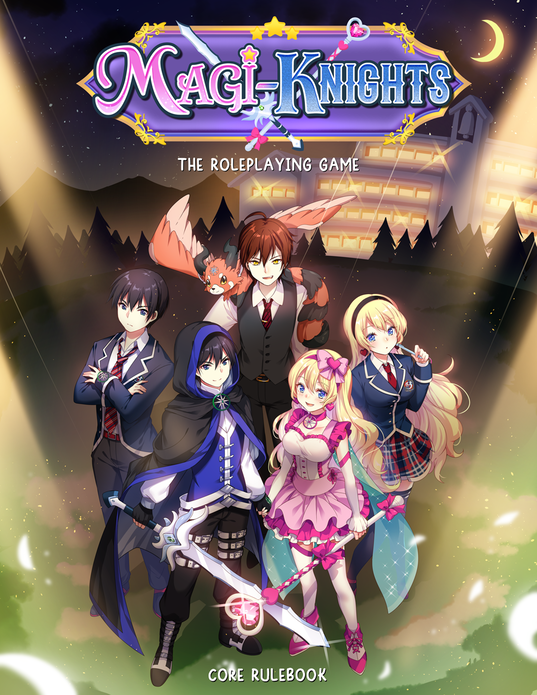
When it comes to the Playtest document itself, you’re already looking at a substantial tome. Without the finishing art and formatting that will come out of the Kickstarter, the playtest already sits at a chonky 143 pages for the sourcebook alone. There’s every bit of info I mentioned above and also a substantial bestiary of villainous foes to boot. You’ll also find a low level playtest adventure called “An Echo From the Stars” ready to check out and fillable character sheets for ease of MK record keeping.
With the Kickstarter rapidly approaching, this is a perfect time to go grab the brand new 2.1 Playtest materials and check this out for yourself. Having reviewed several similar systems, I can say with some confidence that this is going to be one of the better ways to bring those Magical Girl/Sentai vibes to your TTRPG table. If you want to know more about Magi-Knights I also highly recommend heading over and following the crew on Twitter. The creators, Derek and Kira, are friendly folks who are excited and passionate for their project and you'll get to see cool previews and ask questions as the project moves into Kickstarter!
0 Comments
Leave a Reply. |
AuthorHi! I'm Colby. DM, Nerd, IRL Cleric and Writer. Archives
June 2022
Categories
All
|
Proudly powered by Weebly
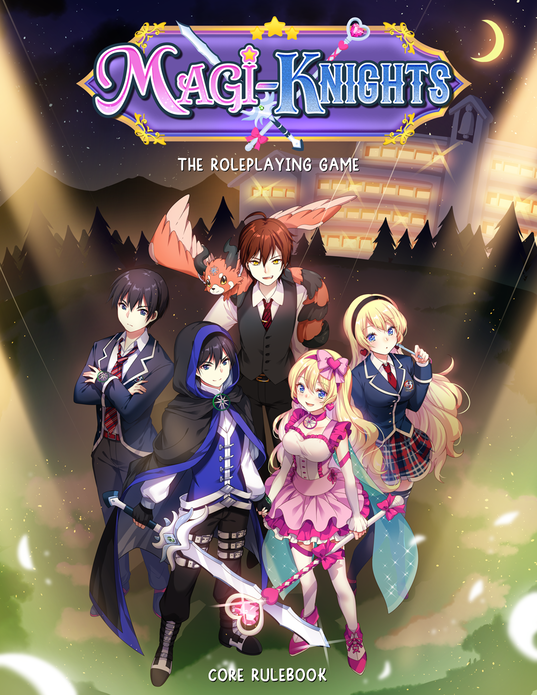
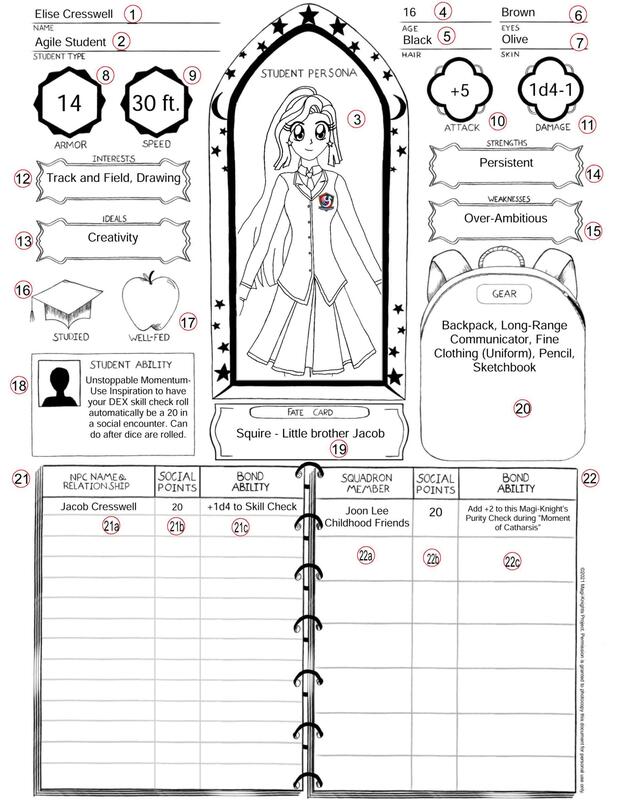
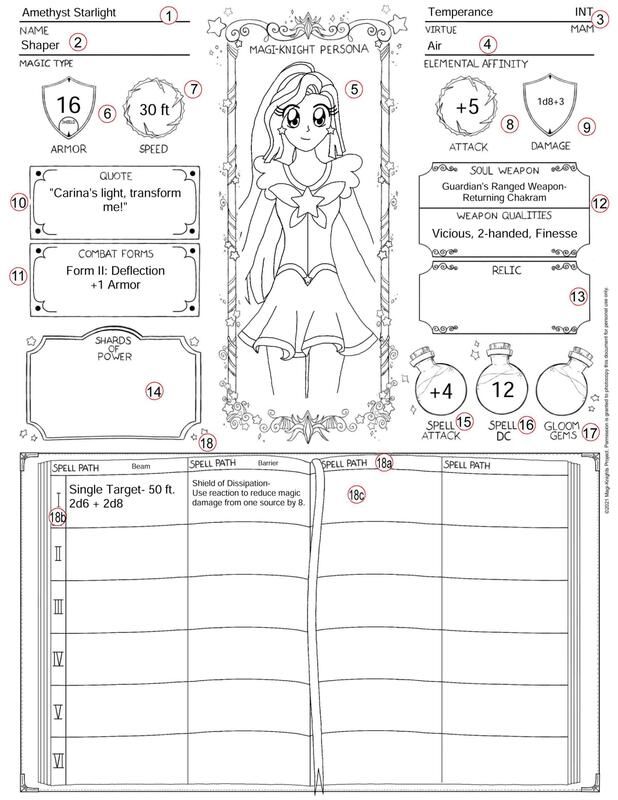

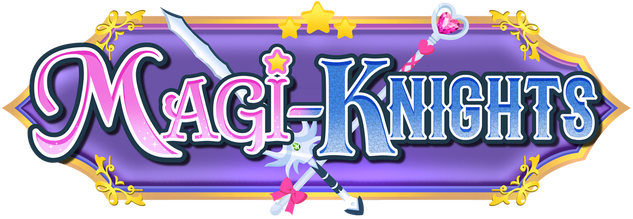
 RSS Feed
RSS Feed